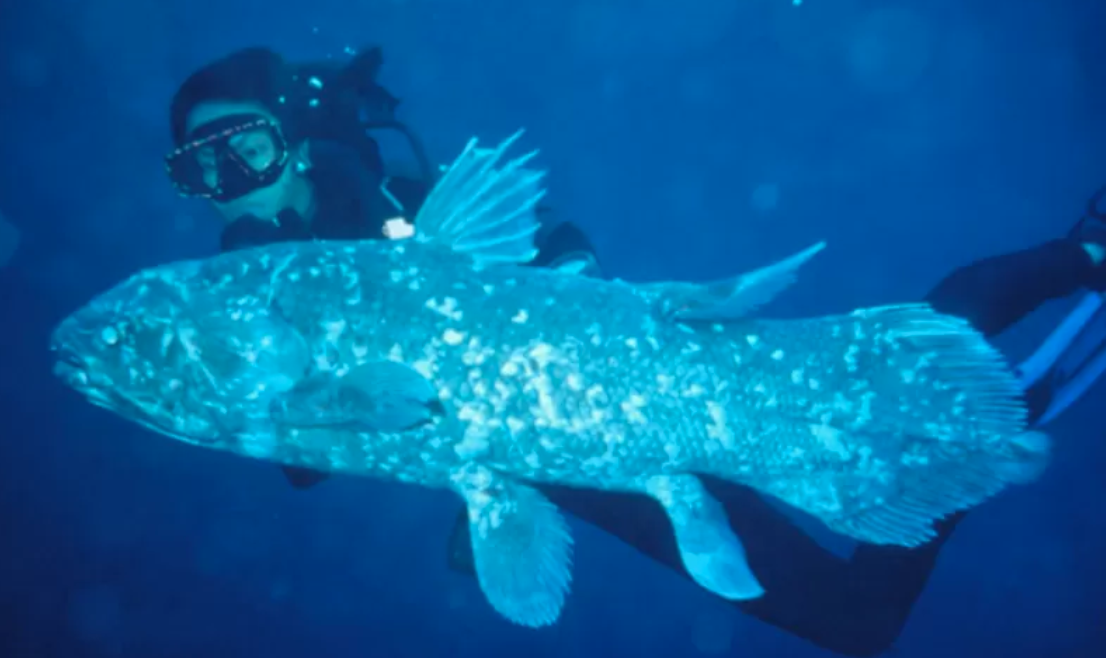The Ocean’s Living Fossil: How the Coelacanth Successfully Cheated Death
The Ocean’s Living Fossil: How the Coelacanth Successfully Cheated Death
By LUCA BERBERICH
Luca Berberich’s long-standing interest in the natural world is being brought to the Talawanda Tribune in their series: Luca B. the Science G. Their fourth article is about the prehistoric fish that seemingly came back from extinction…
Photo Credit: Smithsonian Ocean
The Coelacanth (seel-uh-canth) is a primitive fish, inhabiting the twilight zones of the Indian Ocean and the waters of Indonesia. There are two known species- Latimeria chalumnae and Latimeria menadoensis- the first of which was discovered in 1938 and the second in 1997. The discovery of living Coelacanths came as a shock to marine biologists across the globe, as the prehistoric species had been believed to have been extinct for over 65 million years.
Scientists speculate that the Coelacanth first came about during the Devonian Period, an interval of the Paleozoic Era that is often referred to as the “Age of Fishes”. The Devonian Period was the first appearance of thousands of new deep-sea species, including the earliest relatives of cephalopods, the ammonites, as well as the first four-legged amphibians. This period occurred approximately 167 years before the first age of the dinosaurs.
The first Coelacanths that scientists discovered were fossils. Coelacanth fossils were often discovered among the fossils of brachiopods and ammonites, as well as other Devonian species. Surely the Coelacanth’s existence among these extinct creatures must mean they are extinct too, scientists thought.
This belief was an indisputable fact up until 1938, when the first living Coelacanth was discovered off the coast of Africa. This discovery baffled scientists- how had these fish, which had been nowhere to be seen for millions of years, suddenly become extant again? While the living Coelacanths were classified as species separate from the prehistoric ones, they didn’t seem to have gone through any considerable evolution in the 400 million odd years they had been in existence. So the question remained: just what had they been doing for all those years?
While the history of the Coelacanth remains murky, scientists continue to study and learn from these fantastic fish. A preserved specimen of a Latimera chalumnae is on display at the Smithsonian’s Division of Fishes. Its display is named “The Living Fossil” after the common nickname biologists gave the elusive fish after its discovery. In more ways than one, the Coelacanth is truly a phenomenal example of the mysteries that exist in the depths of the ocean—and what we may find if we look a little bit closer.



